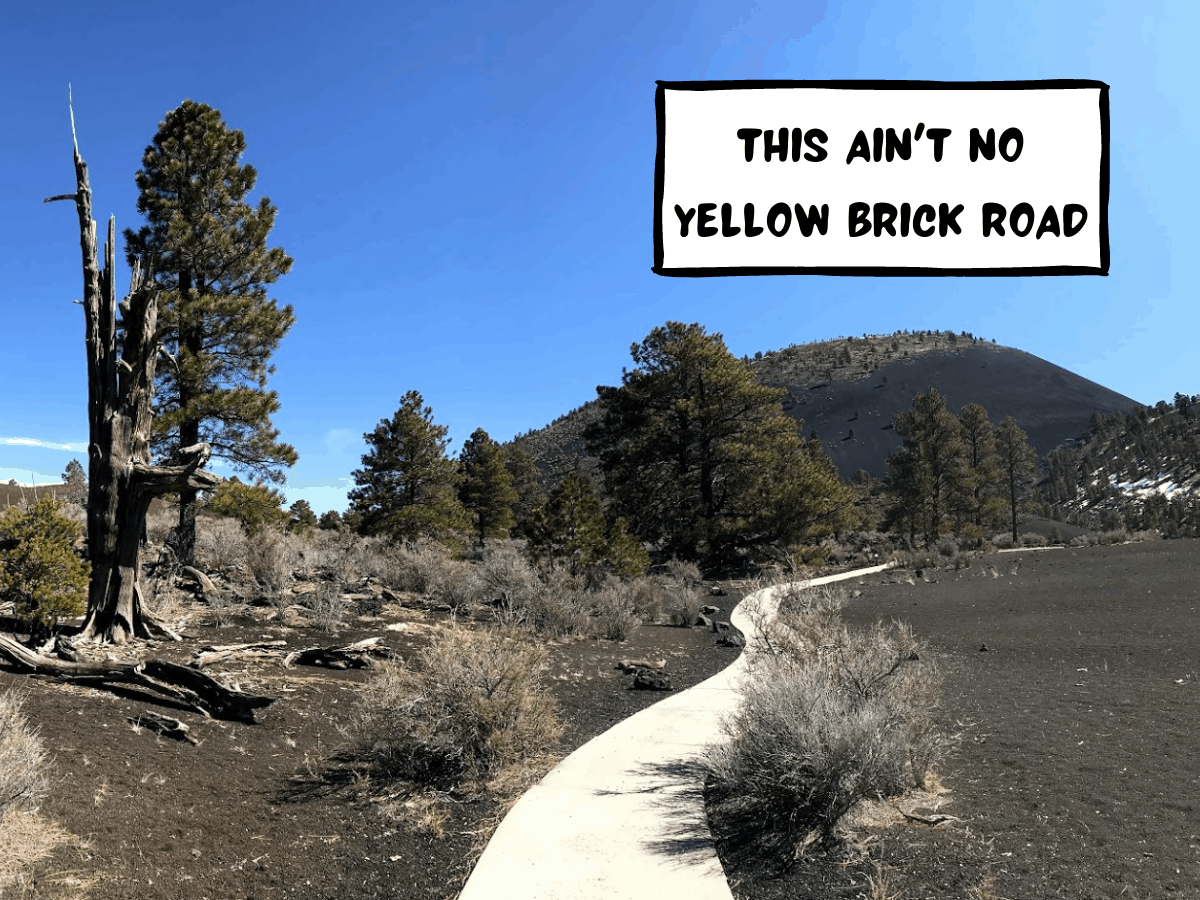
Posted: March 10, 2021
As volcanic ash crunched under my boot tread, I felt fortunate visiting Northern Arizona’s Sunset Crater Volcano National Monument during its dormancy. Picking up a black volcanic rock and rubbing it against my fingers, I shivered as it left behind a trail of soot over my otherwise spotless skin.
I wouldn’t have wanted to be here 900 years ago when the volcano first birthed out of the ground, showering surrounding pine forests with burning red rocks and darkened ash. This destructive act of nature could’ve killed people.
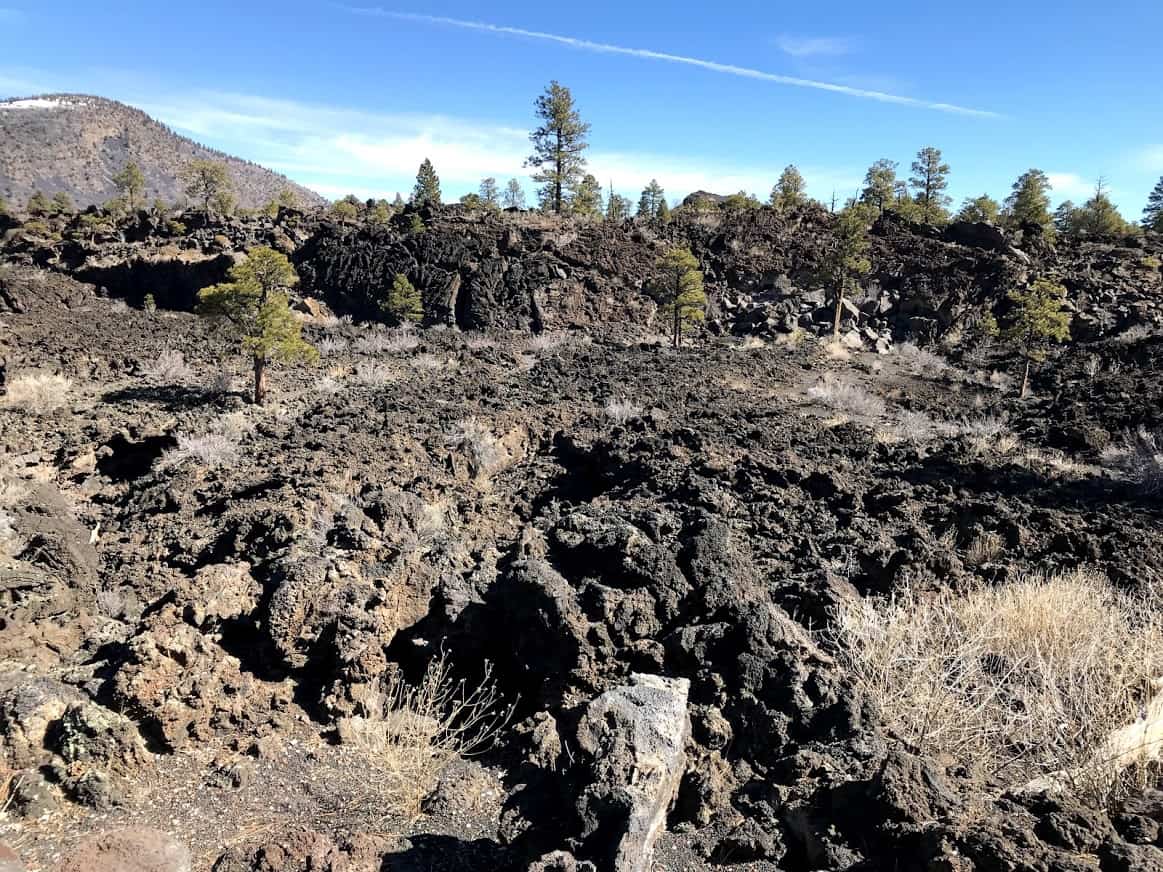
But no evidence of human deaths has been found. The indigenous Sinagua people, the original stewards of land I was standing upon, survived because they avoided the situation altogether. Before any volcano could burst through the earth, earthquakes rocked the land. The Sinagua took this as a warning, abandoning their farmlands and pithouses for a greater promise of survival. Eventually, they established settlements far away from their old stomping — or should I say, shaking? — ground.
Across the Atlantic Ocean in Europe, Mount Vesuvius’s volcanic eruption smothered the Romans in Pompeii — estimated to be thousands — with heat and ash. Because earthquakes frequented the area, those belonging to Mount Vesuvius’s pre-eruption stage were not seen as a threat. Anyhow, Roman science at the time didn’t say anything about earthquakes as a sign of a volcanic eruption.
Before all hell broke loose, smoke escaped from Mount Vesuvius. Although this may scream “dead giveaway!” to you and me, not to the Romans it didn’t, oh no. This new sight only sparked their curiosity. By the time the volcano spewed out its fiery pyroclastic flow, it was too late for many people to skedaddle out of there!
But the Sinagua people heeded nature’s warning signs, thus leaving and saving their own lives. They didn’t want to stick around and challenge natural disasters and any acts of fury that had yet to come.
Their response to an environmental crisis has inspired my patience as a traveler during the COVID-19 pandemic.
On the internet, I’ve seen so many travelers itch to travel far and wide again once the coronavirus situation is under control. Or they feed themselves with the nostalgia of their previous travel experiences.
But I am under no pressure and in no hurry, even as an avid traveler who originally planned to backpack South America and Asia in 2020. I will maintain my patience, waiting it out at home until conditions are safer.
It’s as if a volcanic eruption let loose lingering smoke and ash in the air. I can stay home to avoid breathing in its toxicity, to avoid dirtying my lungs.
The coronavirus is a biological threat that, at its worst, can kill someone by sickening their lungs, drowning them above water. Even it doesn’t result in death, the symptoms are still an annoying timewaster and energy sucker. Who would want to lose their taste, have a fuzzy mind that can’t think sharply anymore, or hurt their throat with every pounding cough?
I really don’t want to mess around with a biological infection that is COVID-19. I don’t need to be sick with it to be warned. Knowing the grave implications are enough of a sign for me to be patient before traveling far.
COVID-19 may not be a fiery visual like a volcanic eruption, but still, it’s a sign from nature all the same that we’d better heed to its warning.
When we breathe, we take air in our lungs — and for granted. In an age of advanced medical science and increasing human lifespans, we need to remind ourselves that the human body is fragile, can still falter under environmental threats, whether it be a volcano or a virus. I don’t want to instigate a challenge of authority between my human body and the coronavirus.
The factors may play in my favor — I’m a young adult without any physical, chronic health problems — but I will continue listening to the environment and following through with its warnings by staying home and not traveling far away.
I’m avoiding the volcanic blast, rather than running straight towards it.
At the time of writing, it’s been exactly one year since the United States began lockdowns in mid-March 2020.
It’s been exactly one year since I last took a trip under normal circumstances with friends.
It’s been exactly one year since the pandemic and its resulting lockdowns tested my stay-at-home patience.
But nothing will shake off my patience. Not even my inner fire to travel far and wide.
Each of my visits to the Sinagua people’s original land, known today as Sunset Crater Volcano National Monument, reminds me of a young volcano that wouldn’t back down, leaving its sooty legacy across not only the pine forest but almost a thousand years.
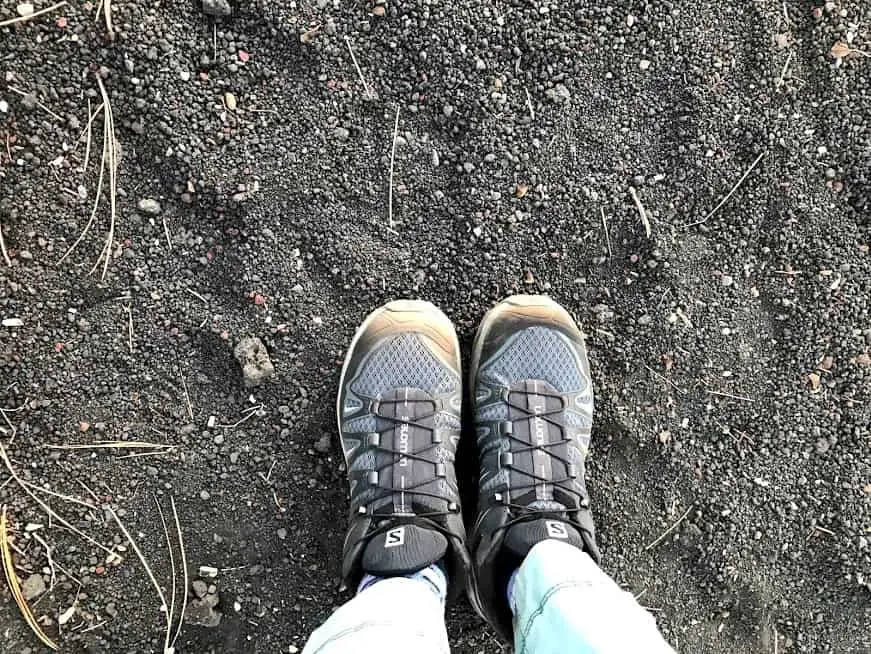
Fortunately, the Sinagua’s wise story has traveled through time, as well. I, too, will remain humble, yielding to environmental crises. In this case, I will stay patient at home while an infectious virus continues to ravage our modern world. COVID-19 is just as stubborn and hard-headed as a volcano blowing its top off.
Share this on Pinterest, you savvy traveler.
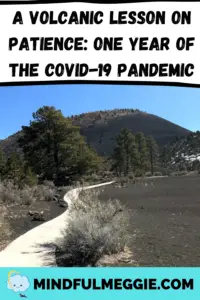


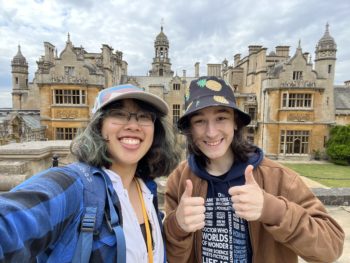
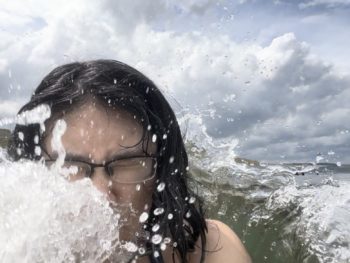

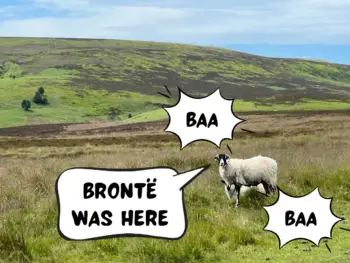
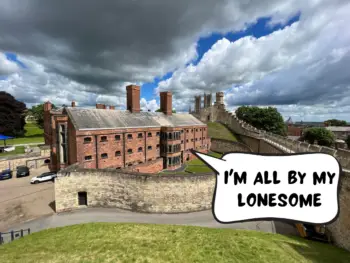
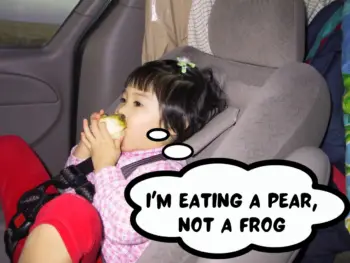
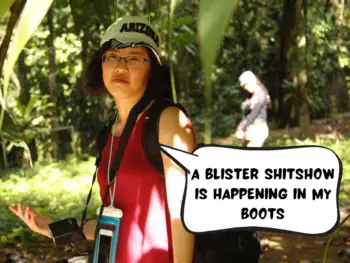
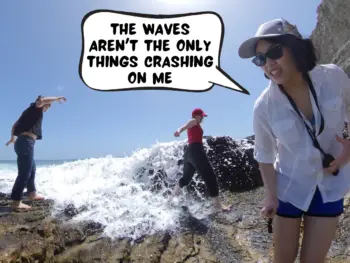
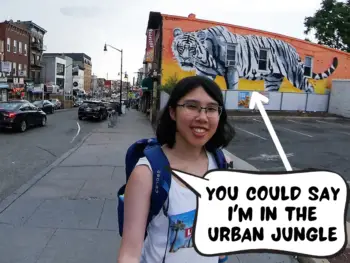
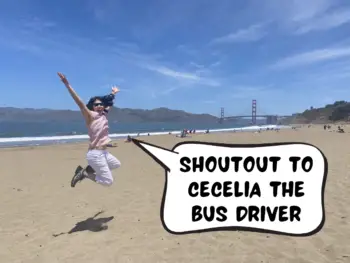
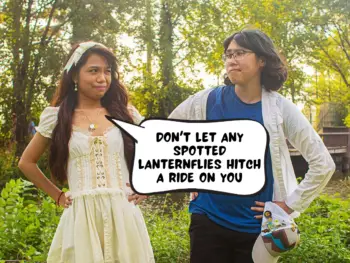
 Travel Insurance and Pre-Existing Mental Illnesses: What You Need to Know
Travel Insurance and Pre-Existing Mental Illnesses: What You Need to Know